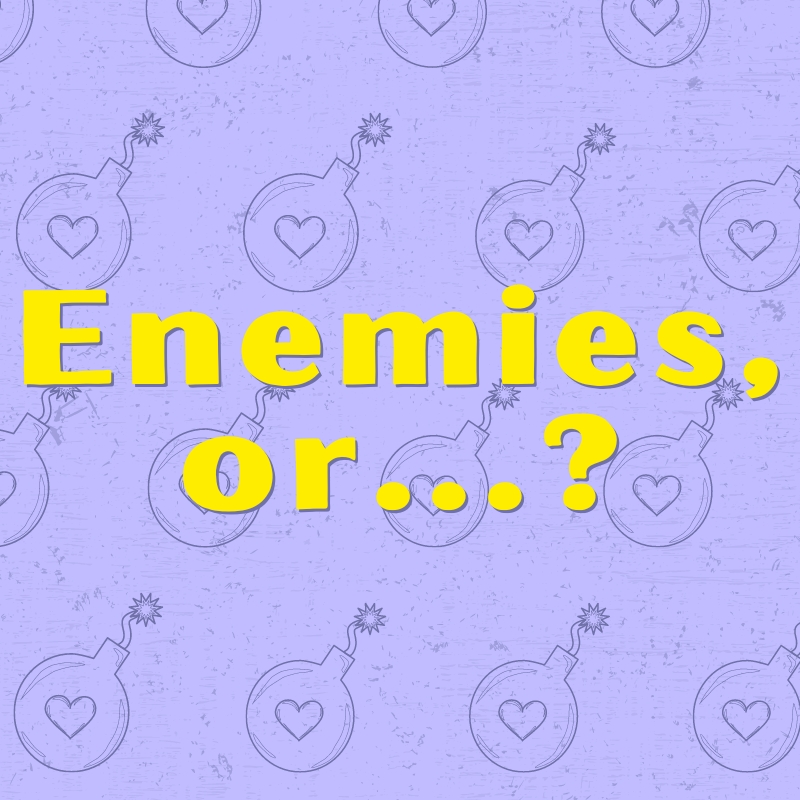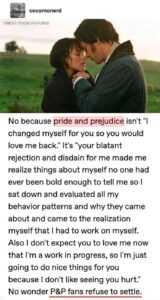How I accidentally wrote an enemies-to-lovers book
May 5, 2023 | General

I describe my book Done and Done as an enemies to lovers office romance. Here’s something you don’t know: I didn’t originally mean for Ely and Alex to be enemies to lovers! As a writer, I am a plantser: someone who plans some aspects of the book, but also discovers plot points as she writes. When I set out to write Done and Done, I knew I wanted it to be a grump/sunshine romance. That was a plot point revelation I had while working on Seeking Stars, my debut novel.
I wrote Liam, my male romantic lead in Seeking Stars, as having a brother with whom he had tense undercurrents. Later in the book, Ely (who is best friends with Ana, my female lead in that novel) asked Liam about his brother… as if she was imagining ending up with him. To which Liam says, “He’s a decent guy, he’s just a grump.” That was the moment I saw it all before my eyes. I knew that Ely would end up with Alex, and it would be a grump/sunshine story.
Something interesting happened when I went back to editing Done and Done, though, and I realized just how much Ely despised Alex at one point.
Enemies-to-lovers in contemporary romance
How to encapsulate the idea that Ely got so angry with Alex that she loathed him? And that he responded in kind? I considered “hate-to-love” and “opposites attract”. With the latter, it seemed to me that it was implied in the grump/sunshine trope. But hate-to-love… that one tripped me up. So I researched it, and I discovered it’s often used within the enemies-to-lovers trope.
This caused a little bit of an existential crisis. What does it mean to say enemies-to-lovers in contemporary romance? When I talked about it with Mr. Leonor Soliz and some of my friends, it seemed like the idea made complete sense in the fantasy romance genre: two people who hate each other, are actively working against each other, and may even have plans to hurt each other. Over time, they fall in love. Meanwhile, in the contemporary romance side of things, it didn’t seem as clear. After reading multiple definitions, some common threads appeared:
- They butt heads, rub each other the wrong way, and are antagonists at the start.
- Sparks fly, leading to bickering. The banter should sizzle!
- Slowly, they overcome their differences and their initial reactions to each other, and they fall in love.
This was a definition I could get behind! In contemporary romance, enemies stands for high conflict between the main characters.
In my opinion, this concept fit the storyline in Done and Done. Interestingly, a couple of readers reached out to me to question why I called the book an enemies-to-lovers story. That’s valid! I’m not complaining. But whenever I have had a chance to have a conversation about it, there is one unexpected notion I like to bring into the conversation: the parallels that exist between Done and Done and one of my favorite stories, Pride and Prejudice. I bring this up because it helps us define the trope in contemporary romance, and why Done and Done follows that arc.
Darcy and Elizabeth, meet Alex and Ely
I’m not going to lie: the similarities between my book and Jane Austen’s classic caught me by surprise. It was during my research on the enemies-to-lovers trope that I first realized my book mirrored pieces of Pride and Prejudice. In some of the articles I read, including this lengthy but fascinating one, they called Darcy and Elizabeth’s story one of the first and most popular enemies-to-lovers books in history. At the time, I considered whether there were more parallels, but I felt shy. How dare I compare my book to Austen’s? So I pushed the thought aside.
Until a good friend and beta for my book sent me this photo, based on cocomonerd‘s post on Tumblr:

No because pride and prejudice isn’t “I changed myself for you so you would love me back.” It’s “your blatant rejection and disdain for me made me realize things about myself no one had ever been bold enough to tell me so I sat down and evaluated all my behavior patterns and why they came about and came to the realization myself that I had to work on myself.
Also I don’t expect you to love me now that I’m a work in progress, so I’m just going to do nice things for you because I don’t like seeing you hurt.” No wonder P&P fans refuse to settle.
What can I say? I fully agree with this sentiment on Pride and Prejudice. Accepting that meant looking at my story again, and admit that, yes, Done and Done also follows this plot point. Early in the story, Ely confronts Alex about his attitude, and he takes it to heart. He goes to therapy, and works on himself. Not because he wants to convince her to love him, but because he recognizes he needs to do this for himself. As he changes and she sees his progress, she falters—does she really want him? And she needs to work through her own prejudice to get her Happily Ever After.
My accidental Pride and Prejudice retelling
Writing this story involved multiple discoveries. First, I decided that I would write Alex and Ely falling in love, and that it would be a grump/sunshine story. Then, I realized the story also fit the enemies-to-lovers arc. Finally, I admitted that, even though I was unaware of it at a time, I’d written a story that worked as a modern Pride and Prejudice retelling. What kind of writer does all of this by accident? Me, apparently!
Now I own it, and love this book deeply. Alex goes through incredible growth, and Ely has to overcome her stubbornness and first impressions of Alex. Seeing them fall in love was a delight. I hope you enjoy the book, too, if you give it a chance.